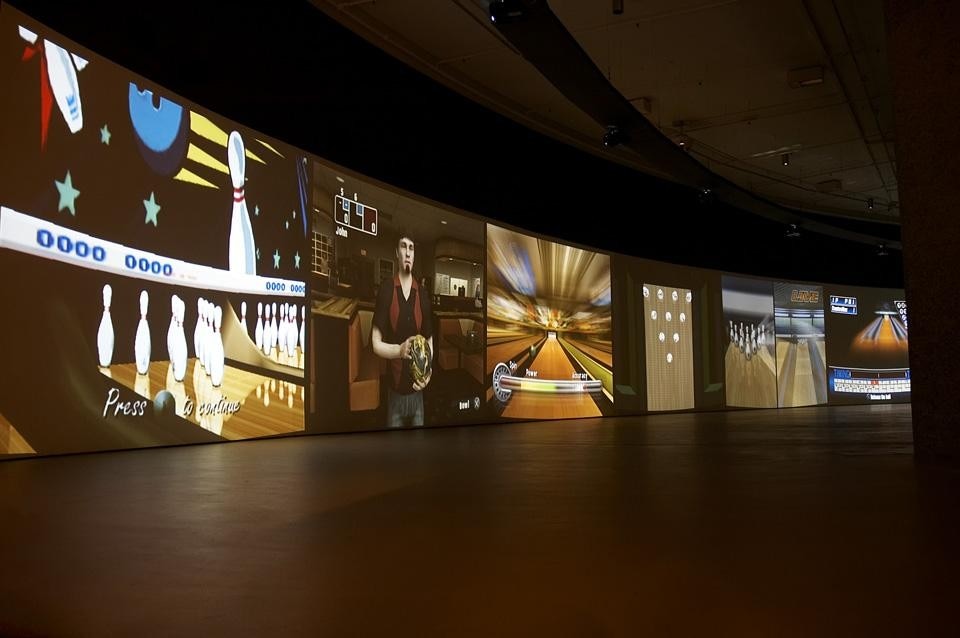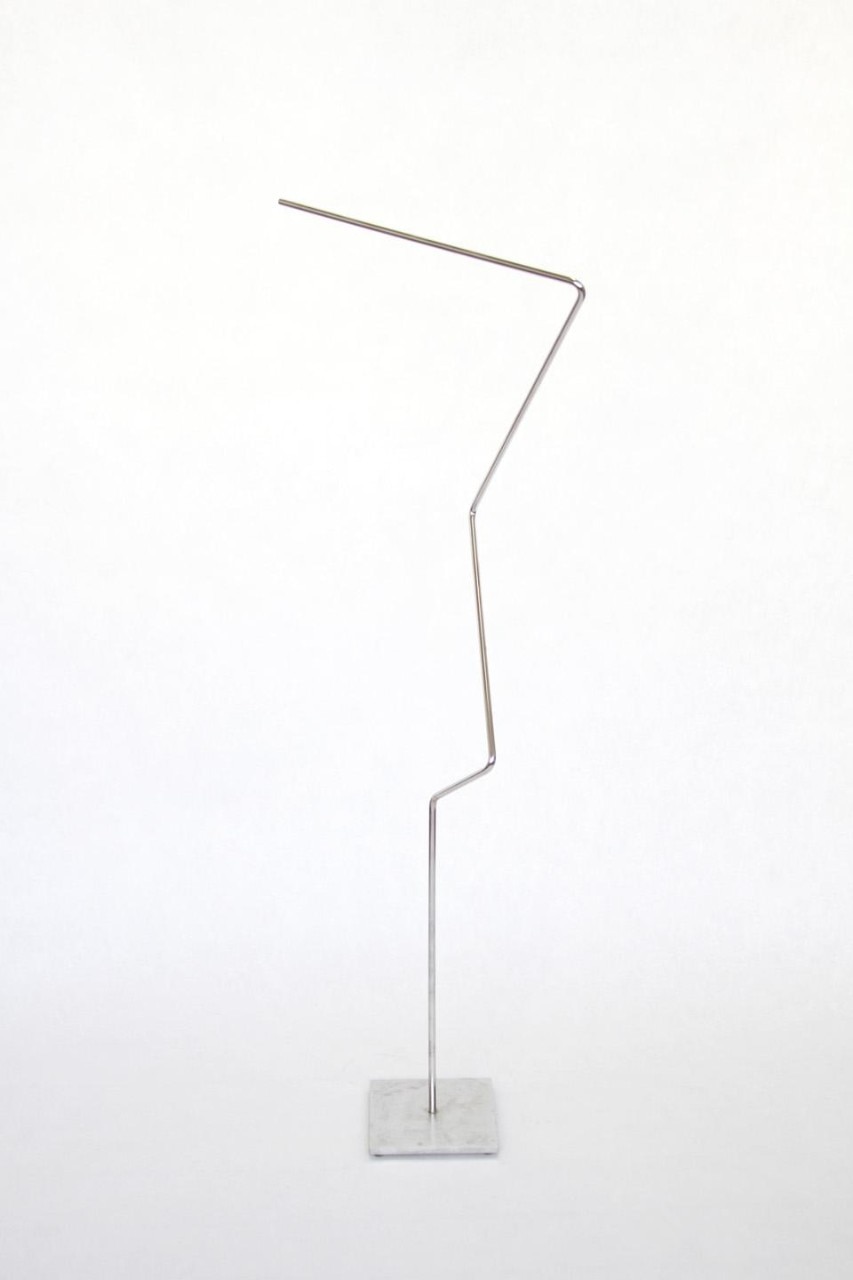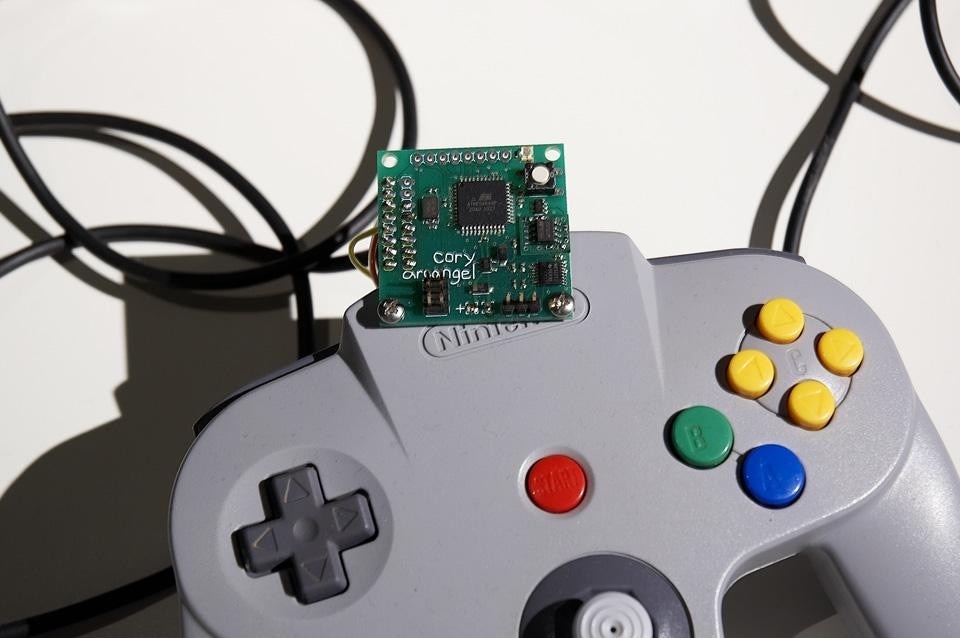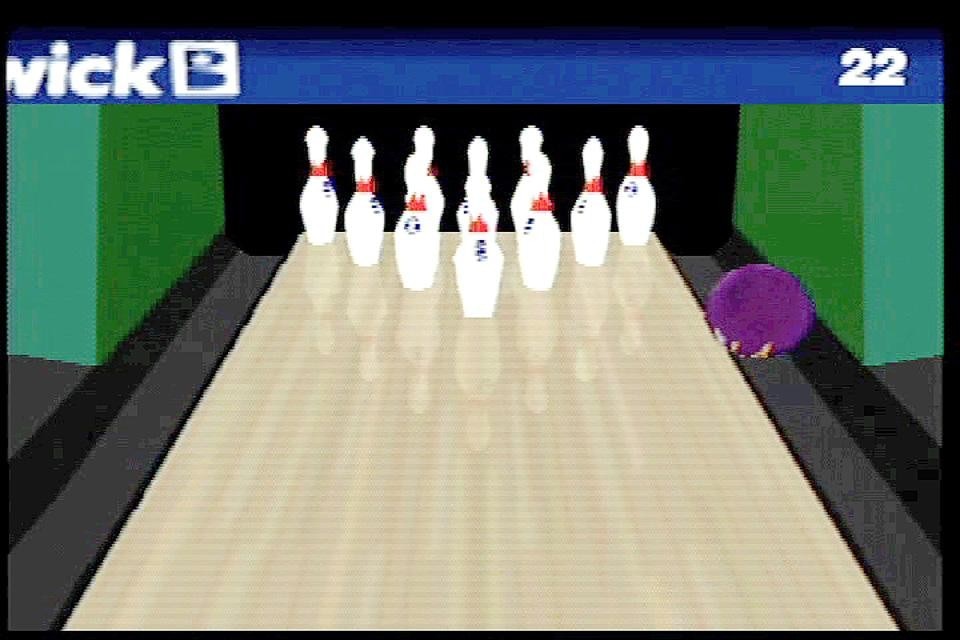Opposite the lifts at the entrance is a monumental installation called Various Self Playing Bowling Games (aka Beat the Champ), (2011), comprising 14 bowling videogames made between 1970 and 2000. The installation is a riveting non-interactive audiovisual collage that spans from the static Atari 2600, with rudimentary 8-bit imagery, to the more realistic 3D simulation of the Playstation with humanoid avatars. Programmed to lose every time, the virtual bowling players are in a loop of constantly repeated frustration. The size of the work is considerable, amplifying the player's sense of impotence and increasing the paradox between its presentation and the pointless end result. Referring also to our addiction to and expectations of technology, the artist says that he sees the repeated failure of the 3-D figure playing bowling as "…a great metaphor for all the different ways that life is spun around technology".


He sees the repeated failure of the 3-D figure playing bowling as "…a great metaphor for all the different ways that life is spun around technology".


Cory Arcangel was born in Buffalo and, although very American, the influences and references in his work are varied and span from American composer Steve Reich to the American comedy Weekend at Bernie's (1989). The sense of fun in his work has that American lightness that arouses admiration and tenderness but also a little anguish, like jokes that are funny straight away but turn sour after a while. Cory Arcangel's work is also nostalgic but, equally perhaps, shares the optimism of certain transhumanists who believe the human condition and people's intellectual, physical and psychological capacities can be improved via the development and extended sharing of technology. Paradoxically, the artist says he is not ironical, "Irony doesn't produce anything. It takes the air out of the world and I can't imagine taking any pleasure in that. I am trying to find something hopeful, some kind of truth."
Laura Bardier
Cory Arcangel: Pro Tools
Whitney Museum of American Art, New York
Through September 11, 2011
Curated by Christiane Paul, Adjunct Curator of New Media Arts
.jpg.foto.rmedium.jpg)


